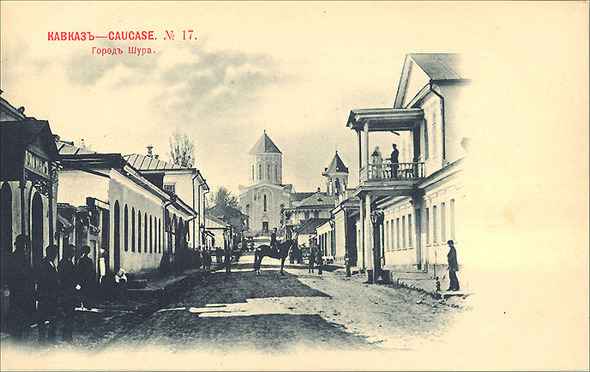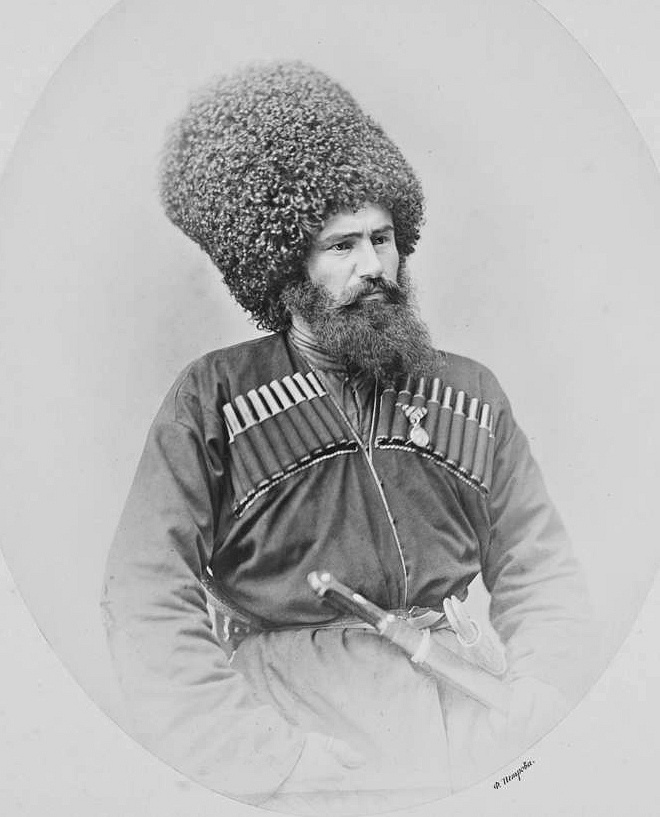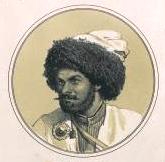|
Buynaksk
Buynaksk (russian: Буйна́кск; kum, Шура / Темирхан-Шура, ''Şura / Temirxan-Şura'') is a town in the Republic of Dagestan, Russia, located at the foothills of the Greater Caucasus on the Shura-Ozen River, southwest of the republic's capital Makhachkala. Population: 40,000 (1970). History Before 1922 Buynaksk was known as Temir-Khan-Shurá (Темир-Хан-Шура), that is, the lake or cliff of Tamerlane who is said to have camped here in 1396 after defeating Tokhtamysh during the Tokhtamysh-Timur war. It first appears in Russian annals in the 1590s when Muscovite ambassadors passed nearby on their way to Georgia. It remained a small town ruled by a Bek. In 1830 the Russians destroyed it when it sided with Kazi Mulla. In 1832 a Russian force under Klugenau camped here during Rosen's raid on Gimry Gimry (russian: Гимры) is a rural locality (a '' selo'') in Untsukulsky District of the Republic of Dagestan, Russia, located in the mounta ... [...More Info...] [...Related Items...] OR: [Wikipedia] [Google] [Baidu] |
Buynaksky District
Buynaksky District (russian: Буйнакский район, kum, Шура якъ) is an administrativeLaw #16 and municipalLaw #6 district (raion), one of the administrative divisions of the Republic of Dagestan, forty-one in the Republic of Dagestan, Russia. It is located in the center of the republic. The area of the district is . Its administrative center is the types of inhabited localities in Russia, town of Buynaksk (which is not administratively a part of the district). As of the Russian Census (2010), 2010 Census, the total population of the district was 73,402. Administrative and municipal status Within the subdivisions of Russia#Administrative divisions, framework of administrative divisions, Buynaksky District is one of the administrative divisions of the Republic of Dagestan, forty-one in the republic. It is divided into nine selsoviets, comprising thirty types of inhabited localities in Russia, rural localities. The town of Buynaksk serves as its administrati ... [...More Info...] [...Related Items...] OR: [Wikipedia] [Google] [Baidu] |
Republic Of Dagestan
Dagestan ( ; rus, Дагеста́н, , dəɡʲɪˈstan, links=yes), officially the Republic of Dagestan (russian: Респу́блика Дагеста́н, Respúblika Dagestán, links=no), is a republics of Russia, republic of Russia situated in the North Caucasus of Eastern Europe, along the Caspian Sea. It is located north of the Greater Caucasus, and is a part of the North Caucasian Federal District. The republic is the southernmost tip of Russia, sharing land borders with the countries of Azerbaijan and Georgia (country), Georgia to the south and southwest, the Russian republics of Chechnya and Kalmykia to the west and north, and with Stavropol Krai to the northwest. Makhachkala is the republic's capital city, capital and types of inhabited localities in Russia, largest city; other major cities are Derbent, Kizlyar, Izberbash, Kaspiysk and Buynaksk. Dagestan covers an area of , with a population of over 3.1 million, consisting of over 30 ethnic groups and 81 nati ... [...More Info...] [...Related Items...] OR: [Wikipedia] [Google] [Baidu] |
Dagestan Oblast
The Dagestan Oblast was a province (''oblast'') of the Caucasus Viceroyalty of the Russian Empire. It roughly corresponded to most of present-day southeastern Dagestan within the Russian Federation. The Dagestan Oblast was created in 1860 out of the territories of the former Caucasian Imamate, bordering the Terek Oblast to the north, the Tiflis Governorate and Zakatal Okrug to the west, the Elizavetpol Governorate to the south, and Baku Governorate to the east. The administrative center of the ''oblast'' was Temir-Khan-Shura (present-day Buynaksk). Administrative divisions The districts (''okrugs'') of the Dagestan Oblast in 1917 were as follows: Demographics Russian Empire census (1897) According to the Russian Empire Census The first general census of the population of the Russian Empire in 1897 ( pre-reform Russian: ) was the first and only nation-wide census performed in the Russian Empire (the Grand Duchy of Finland was excluded). It recorded demographic data as ... [...More Info...] [...Related Items...] OR: [Wikipedia] [Google] [Baidu] |
Administrative Divisions Of The Republic Of Dagestan
*Cities and towns under republic's jurisdiction **Makhachkala (Махачкала) (capital) ***''city districts'': **** Kirovsky (Кировский) *****''Urban-type settlements'' under the city district's jurisdiction: ****** Leninkent (Ленинкент) ******Semender (Семендер) ******Sulak (Сулак) ****** Shamkhal (Шамхал) **** Leninsky (Ленинский) *****''Urban-type settlements'' under the city district's jurisdiction: ****** Novy Kyakhulay (Новый Кяхулай) **** Sovetsky (Советский) *****''Urban-type settlements'' under the city district's jurisdiction: ******Alburikent (Альбурикент) ****** Kyakhulay (Кяхулай) ******Tarki (Тарки) **Buynaksk (Буйнакск) **Dagestanskiye Ogni (Дагестанские Огни) **Derbent (Дербент) **Izberbash (Избербаш) **Kaspiysk (Каспийск) **Khasavyurt (Хасавюрт) ** Kizilyurt (Кизилюрт) ***''Urban-type settlements'' under the t ... [...More Info...] [...Related Items...] OR: [Wikipedia] [Google] [Baidu] |
Mountainous Republic Of The Northern Caucasus
The Mountainous Republic of the Northern Caucasus (MRNC; also known as the United Republics of the North Caucasus, Mountain Republic or the Republic of the Mountaineers) was a country in the North Caucasus formed by the unification of Circassians, Chechens, Ingush, Ossetians and Dagestanis proclaimed at the congress of the North Caucasian peoples on 6 March 1917. It existed from 1917 until 1922. MRNC included most of the territory of the former Terek Oblast and Dagestan Oblast of the Russian Empire, which now form the republics of Chechnya, Ingushetia, North Ossetia–Alania, Kabardino-Balkaria, Dagestan, Abkhazia and part of Stavropol Krai of the Russian Federation. The total land area was about , with a population of about 11 million. Its capital was initially at Vladikavkaz, then Nazran, and finally Temir-Khan-Shura. It broke away from the Russian Empire during the February Revolution, shortly before the start of the Russian Civil War. The state was captured by Soviet Rus ... [...More Info...] [...Related Items...] OR: [Wikipedia] [Google] [Baidu] |
Kumyks
, image = Abdul-Wahab son of Mustafa — a prominent Kumyk architect of the 19th century. , population = near 600,000 , region1 = , pop1 = 503,060 , ref1 = , region2 = , pop2 = 10,000 , ref2 = , region3 = , pop3 = 718 , ref3 = , langs = Kumyk language , region4 = , pop4 = 1200 , ref4 = , region5 = , pop5 = 481 , ref5 = , region6 = , pop6 = 360 , ref6 = , region7 = , pop7 = 33 , ref7 = [...More Info...] [...Related Items...] OR: [Wikipedia] [Google] [Baidu] |
Avar People (Caucasus)
The Avars, also known as ''Maharuls'' ( Avar: , , "mountaineers") are a Northeast Caucasian ethnic group. The Avars are the largest of several ethnic groups living in the Russian republic of Dagestan. The Avars reside in the North Caucasus between the Black Sea and the Caspian Sea. Alongside other ethnic groups in the North Caucasus region, the Avars live in ancient villages located approximately 2,000 m above sea level. The Avar language spoken by the Caucasian Avars belongs to the family of Northeast Caucasian languages. Sunni Islam has been the prevailing religion of the Avars since the 13th century. Ethnonyms According to 19th-century Russian historians, the Avars' neighbors usually referred to them as Tavlins (''tavlintsy''). This is an exonym. Vasily Potto wrote that those to the south usually knew them as Tavlins (''tavlintsy''). Potto wrote, "The words in different languages have the same meaning... fmountain dwellers rhighlanders."''В. А. Потто.'Кавказс ... [...More Info...] [...Related Items...] OR: [Wikipedia] [Google] [Baidu] |
Hadji Murad
Hadji Murad (russian: Хаджи-Мурат, av, XӀажи Мурад; 1818 – April 23, N.S. May 5, 1852) was an important North Caucasian Avar leader during the resistance of the peoples of Dagestan and Chechnya in 1811–1864 against the incorporation of the region into the Russian Empire. Life Youth Hadji Murad was an Avar commander who lived in the North Caucasus. He was foster-brother to Omar, son of Pakkou-Bekkhe, the Khanum of Khunzakh. According to the legend relayed by Leo Tolstoy, Murad's mother Patimat was originally to have been forced to give up her baby to become wet nurse for Omar. Her refusal nearly led to her murder but though stabbed in the breast she survived and indeed was finally able to wean her own son. Alliance with Russia Hadji Murad was involved in the murder of Gazmat-Bek during a Friday prayer in 1834, in revenge for Gamzat's murdering of the Khanum of Khunzakh and her sons. Murad's brother, Osman, was slain in the fight with Gamzat-bek's Muri ... [...More Info...] [...Related Items...] OR: [Wikipedia] [Google] [Baidu] |
Lak People (Dagestan)
The Laks (self-designation: Lak) are a Northeast Caucasian ethnic group native to an inland region known as ''Lakia'' within Dagestan in the North Caucasus. They speak the Lak language. Laks historically live in the Lakskiy and Kulinskiy districts of Dagestan. This ethnocultural area is known as Lakia. There are about 200,000 ethnic Laks in the world. Ethnonym The word "Lak" is the self-designation of the Lak people as in Lak expressions: "zhu Lak buru" — we are Lak; "zhu Lakral khalq buru" — we are Lak people; "Laktal" — Laks; "Lakssa" — Lakian, Laks, Lak man; "Lakkuchu" — Lakian man; "Lakku maz" — Lakian language; "Lakkuy" — Lakia; "Lakral kanu" — Lak place; "Lakral kanu" — Lak district; "Lakku bilayat" — Lak country; "Lakral pachchahlug" — Lak state. Laks use the name "Lak" as their ethnonym and placename. P. K. Uslar (1864) reported on the use of self-designation "Lak" by residents of Gazi-Kumukh: "Lakkuchu, Lakkuchunal, nominative plural Lak, geni ... [...More Info...] [...Related Items...] OR: [Wikipedia] [Google] [Baidu] |
Administrative Center
An administrative center is a seat of regional administration or local government, or a county town, or the place where the central administration of a commune A commune is an alternative term for an intentional community. Commune or comună or comune or other derivations may also refer to: Administrative-territorial entities * Commune (administrative division), a municipality or township ** Communes of ... is located. In countries with French as administrative language (such as Belgium, Luxembourg, Switzerland and many African countries), a (, plural form , literally 'chief place' or 'main place'), is a town or city that is important from an administrative perspective. Algeria The capital of an Algerian province is called a chef-lieu. The capital of a Districts of Algeria, district, the next largest division, is also called a chef-lieu, whilst the capital of the lowest division, the Municipalities of Algeria, municipalities, is called agglomération de chef-lieu (chef-lieu ... [...More Info...] [...Related Items...] OR: [Wikipedia] [Google] [Baidu] |
Subdivisions Of Russia
Russia is divided into several types and levels of subdivisions. Federal subjects Since 30 September 2022, the Russian Federation has consisted of eighty-nine federal subjects that are constituent members of the Federation.Constitution, Article 65 However, six of these federal subjects—the Republic of Crimea, the Donetsk People's Republic, the Russian occupation of Kherson Oblast, Kherson Oblast, the Luhansk People's Republic, Lugansk People's Republic, the federal cities of Russia, federal city of Sevastopol and the Russian occupation of Zaporizhzhia Oblast, Zaporozhye Oblast—are internationally recognized as part of Ukraine. All federal subjects are of equal federal rights in the sense that they have equal representation—two delegates each—in the Federation Council of Russia, Federation Council (upper house of the Federal Assembly of Russia, Federal Assembly). They do, however, differ in the degree of autonomous area, autonomy they enjoy. De jure, there are 6&n ... [...More Info...] [...Related Items...] OR: [Wikipedia] [Google] [Baidu] |
Zhiguli Car
Zhiguli ( rus, Жигули, p=ʐɨɡʊˈlʲi) was a designation of cars based on the Fiat 124 manufactured in Russia and the Soviet Union by AvtoVAZ (formerly VAZ) during 1970-2012 and somewhat longer in some places abroad. For the majority of export markets however the cars were sold under the Lada brand. The car was also manufactured in Ukraine and in Egypt. In Egypt the last car of this model was manufactured in 2014. The designation is named after the Zhiguli Mountains by the Volga River, to match the name of the plant ('VAZ' stands for "Volzhsky Avtomobilny Zavod" or "Volga Automobile Plant"). There have been 7 models of this designation: VAZ-2101, VAZ-2102, VAZ-2103, VAZ-2104, VAZ-2105, VAZ-2106, VAZ-2107, with modifications indicated by an extra digit, see List of AvtoVAZ vehicles# Classic Zhiguli, List of AvtoVAZ vehicles. The longest-living model was VAZ-2105 (1979-2010). After the Dissolution of the Soviet Union, collapse of the Soviet Union in 1991, a shortage of use ... [...More Info...] [...Related Items...] OR: [Wikipedia] [Google] [Baidu] |




_(10004827914).jpg)